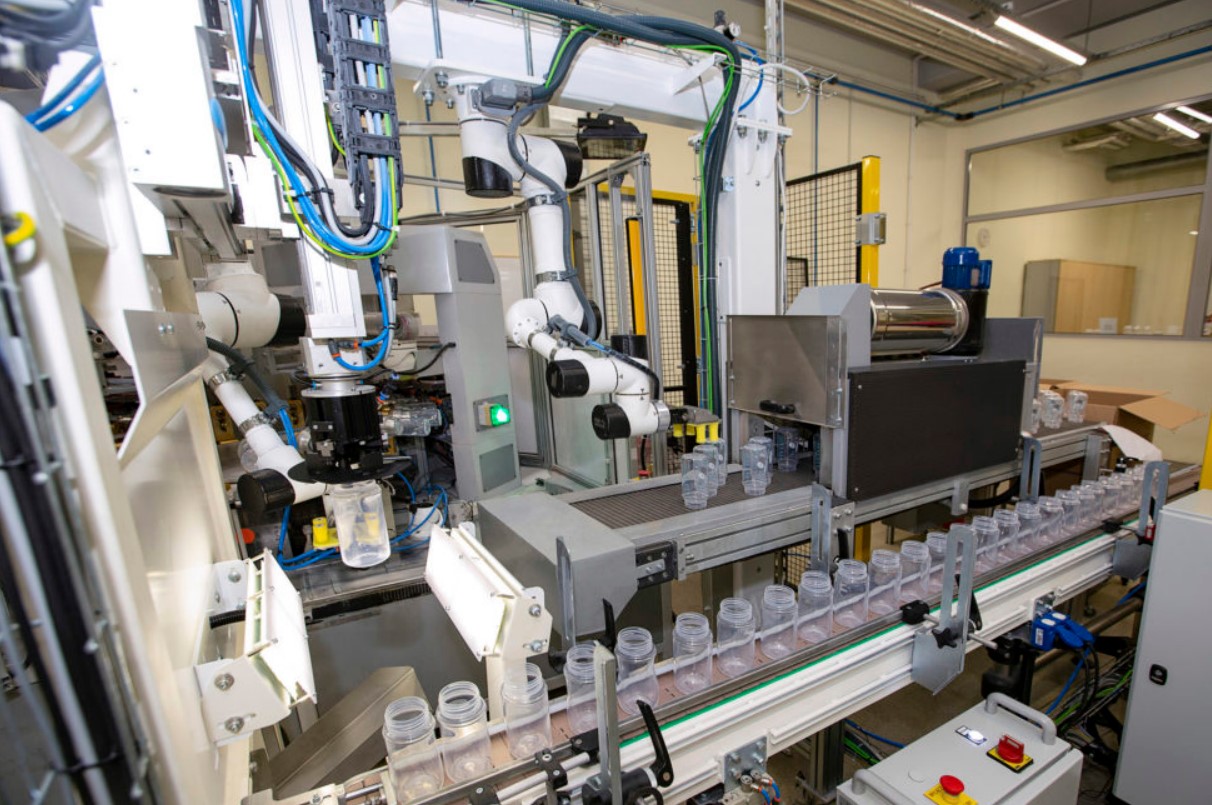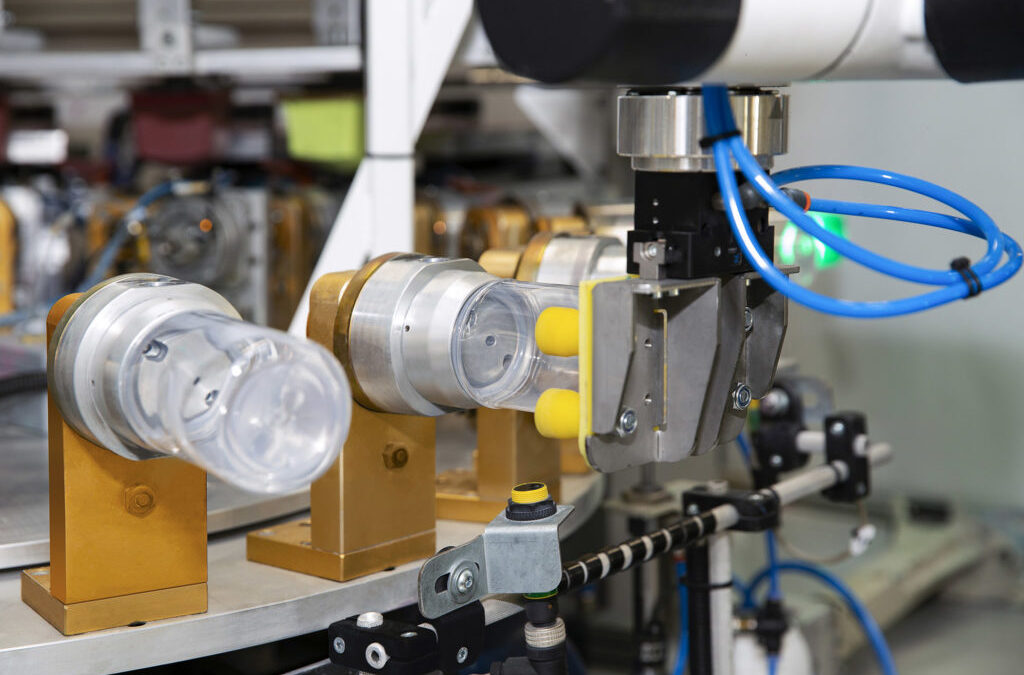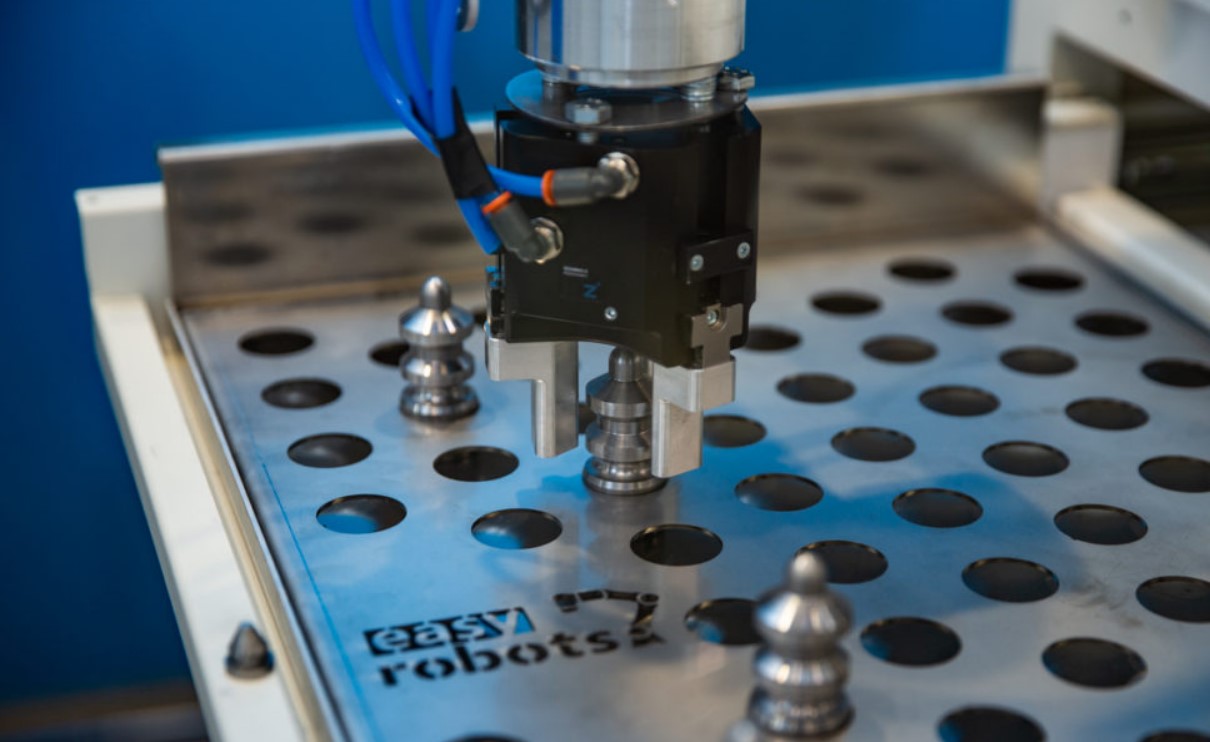A robotic line for operating a pad printing machine at CANPOL
The robotic line for operating a pad printing machine is an example of a solution for the food industry using the EScontrol vision system, two 6-axis ES5 robots and a Cartesian robot.
DESCRIPTION OF THE CUSTOMER'S SITUATION
The line integrated with a pad printing machine is the second stage of robotization at Canpol, after the robotic packaging and palletizing station, which was launched at the end of 2019.
Before the changes were introduced, operators were obliged to be constantly present on the production line, manually feeding and packing bottles into cartons, which they then moved to the next stage of production many times during the day.
WHAT DOES THE PRODUCTION PROCESS USING ROBOTS LOOK LIKE?
Due to the complexity of the production process, we used the EScontrol vision system, two ES5 robots and a Cartesian manipulator. The cooperating systems are responsible for moving the bottle from the conveyor, analyzing the position of the markers and transferring it in the appropriate position to the pad printing machine. In the final phase, the finished bottle is automatically collected from the machine.
Level 1
A 3-axis robot picks up a bottle from the conveyor and moves it over the cameras of the vision system.
Stage 2
The EScontrol vision system classifies the factory markings applied by the manufacturer on the bottles. Illuminators installed on the supporting structure provide accurate illumination of the bottle, which helps to correctly determine the position of the product. EScontrol then sends a signal to adjust the position of the bottle, and the 3-axis manipulator rotates it and sets it in the set position. The bottle classified in this way is transferred to the next machine in the line, which is the ES5 robot no. 1, which in turn places it in the wheel of the pad printing machine.
Stage 3
The wheel of the pad printing machine rotates and the print is applied to the bottles inside the device. The cycle time of the tamporuk machine is approximately 4.5 seconds.
Stage 4
The finished bottle is received from the other side of the device by the ES5 robotic arm no. 2 and placed on the dryer conveyor (customer's device), which transports it to the oven to harden the print.
Moreover, the use of robots allows you to reduce expenditure and losses, as well as lower the costs of palletizing and packaging processes and the entire production. And this is regardless of the company's staffing situation. The ability to individually adjust the parameters of robots and entire palletizing stations means that they can work with various materials and help entrepreneurs achieve their business goals.
Palletizing robots – the most important advantages
Automation of palletizing processes offers numerous advantages for the company - regardless of the industry field it specializes in and what materials are palletized or packed. The most important advantages of palletizing robots include:
– universality of use – in various industries and when packing/palletizing various goods, including cartons, bottles, jars, containers, cans and many others;
– possibility of programming any sequences according to which the robot performs subsequent activities, which ensures adaptation to the individual specificity of the process;
– precision, repeatability of movements and no downtime;
– significant increase in process efficiency and relief of employees from tedious, monotonous work;
– ease and safety of operation, as well as support from specialists in the implementation of robots;
– reducing the costs of palletizing and packaging, and therefore – the entire production.a.
CHALLENGES
Limited space
Different bottle diameters
Each ES5 robot gripper consists of a jaw equipped with 4 profiled sleeves. Installation of the grippers is easy and allows for quick retooling when the bottle diameter changes.
Regardless of the bottle model, the gripper sleeves are made of a special soft material that prevents damage to the bottle surface.
Different bottle heights

RESULTS
As a result of the work, it was possible to effectively automate production processes and:
achieve an efficient and fast loading and receiving system
ensure smooth production - collection and loading take place simultaneously
save production space with a ceiling system
implement one station for many bottle diameters and heights




